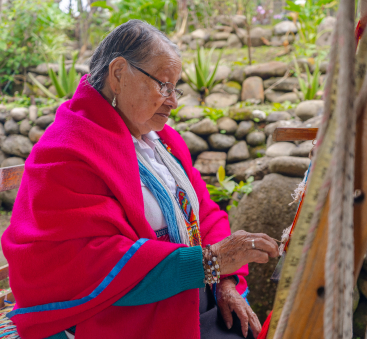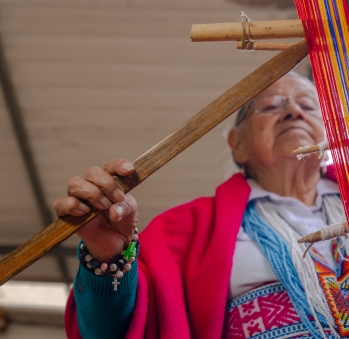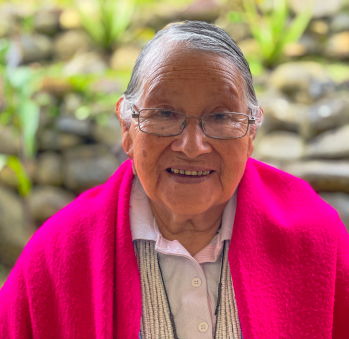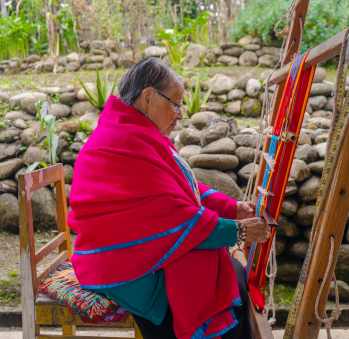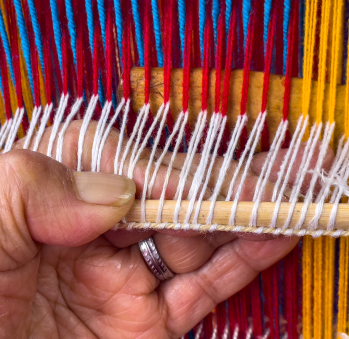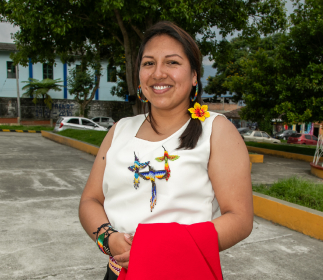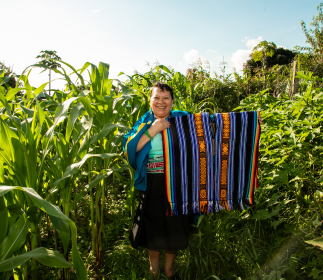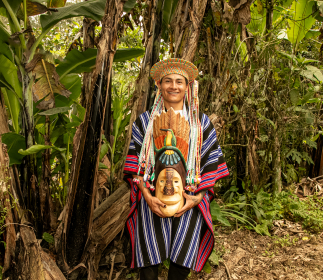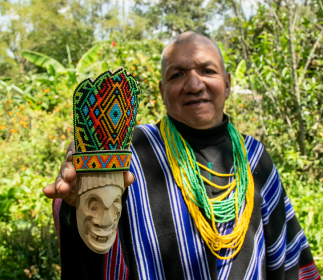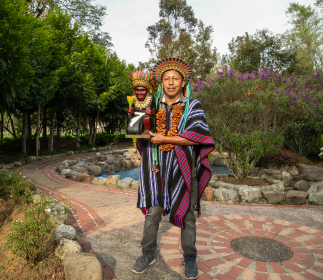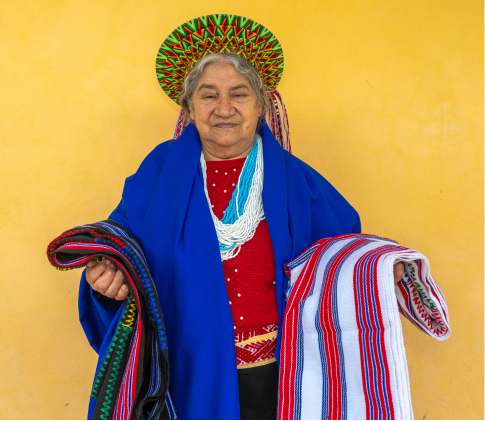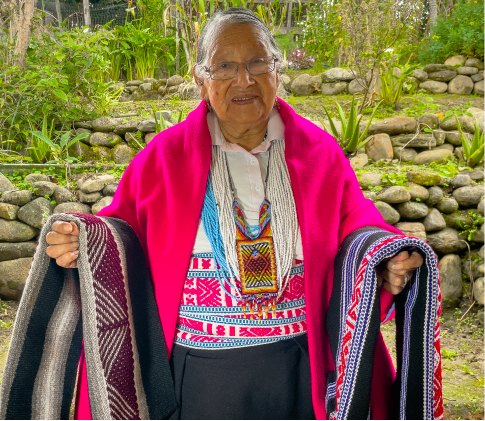Mamá Pastora Juajibioy de Jamioy y Hugo Jamioy
SCHEDULE YOUR VISIT
Calle 18 # 13-54. Barrio Oriental.
Alejandra Jamioy 3229579313
Whatsapp 3212434939
Hugo speaks of his mother with love and reverence. He speaks of what she has taught to both him and his entire community —which considers her as one of their great teachers—. Mamá Pastora is how she is known all throughout the Sibundoy Valley. Her life has been exemplary, as well as her efforts to preserve Kamentsá thought. The latter has been built upon the particular land and language they inhabit: the backbone of their ancestral culture.
Hugo tells us that weaving is essential in the Kamentsá world. They see themselves, their bodies, and the universe as weavings. Every individual component of these weavings —each one of us, for instance— is a thread that helps sustain life. In his own words, “if a single thread were to break, the universe would start to crumble.” Hugo is as good a craftsman as he is a poet. He learned everything he knows from Mamá Pastora. He used to weave by her side alongside his siblings and listen to her stories about the origin of the world since he was eight years old. He knows he will never stop learning; despite all of the beautiful wisdom he has already attained. This echoes the beautiful words his father once told him: “not until the last day of my existence will I know and understand exactly who I am as a Kamentsá.”
Mamá Pastora has been weaving for more than seven decades. She has taught everyone in her great family how to do so as well. She makes the conscious effort to record the history of her people through the symbols she makes stitch by stitch. Her work is the Great Book of her community: a detailed account of who they are and what they believe in. She built a sort of dialogue that portrays nature through its own symbolic language and allows for Kamentsá history to be available for generations to come. As Hugo himself says, “witnessing one of these wares is like standing in front of a mirror or a spring that reflects our face back to us. We become able to further remember and value the images of our grandmothers, our symbols, our colors.”
The Kamentsá people have a particular way of weaving because, for them, everything must have meaning and a reason behind it. They hang long rows of threads from tree branches and tie them around their waists close to their navels, so they do not forget their connection with their mothers and their land.
This is Mamá Pastora’s legacy: to make people talk about art in its deepest dimension, one in which weaving is the pretext for shared spiritual healing. It is also a way of preserving her language, inside which her entire world, and the vastness of her spiritual and natural knowledge, lie. Everything they do is a sign of their resistance to oblivion.
Craft

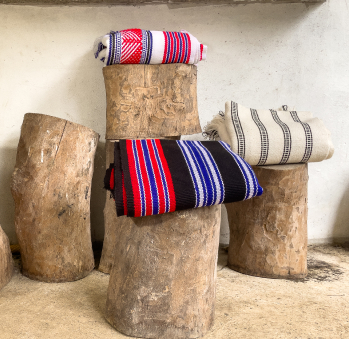

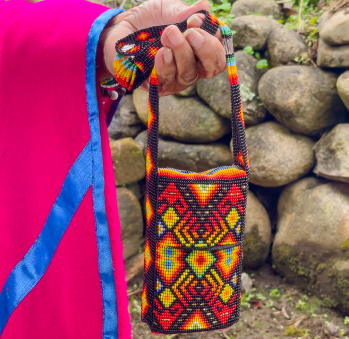




Artisans along the way
Artisans along the way
No puede copiar contenido de esta página









































